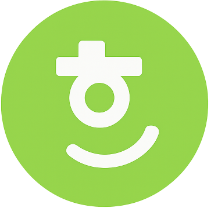Level Up Your Career in Korean: Master Next Quarter’s Goals!
안녕하세요! 여러분의 한국어 실력을 업그레이드해 줄 [매일한글]입니다!
(Hello! This is [Maeil Hangul], here to upgrade your Korean skills!)
Have you ever been in a meeting at a Korean company and wanted to confidently talk about your future plans and goals? Or maybe you’re a fan of K-dramas set in offices and want to understand what the ambitious characters are talking about. Well, you’re in the right place!
These days in Korea, especially in fast-paced industries like IT and media, setting clear quarterly goals is a huge trend. Companies are focused on growth, and being able to discuss your objectives is a key skill. Today, we’ll learn the essential Korean expressions to set your work goals for the next quarter and impress your colleagues!
Core Expressions You Need to Know
Here are three key phrases that will make you sound like a pro in your next team meeting.
1. 다음 분기 목표 (Daeum bungi mokpyo)
- Pronunciation [Romanization]: Daeum bungi mokpyo
- English Meaning: Next quarter’s goal / objective
- Detailed Explanation: This is the foundational phrase for our topic. Let’s break it down:
- 다음 (daeum): next
- 분기 (bungi): quarter (of a year)
- 목표 (mokpyo): goal, target, objective
You can use this phrase to ask about or state your goals. For example, “What is your goal for the next quarter?” would be “다음 분기 목표가 뭐예요?” (Daeum bungi mokpyoga mwoyeyo?).
- 💡 Pronunciation Tip: In the word 목표 [mokpyo], the 받침 (final consonant) ‘ㄱ’ (g/k) in ‘목’ meets the consonant ‘ㅍ’ (p) in ‘표’. This ‘ㅍ’ sound becomes a stronger, tensed sound, similar to ‘ㅃ’ (pp). So, instead of a soft “mok-pyo,” it sounds more like [목뾰/mok-ppyo]. This is a common phonetic change called 된소리되기 (doensori doegi) or “tensing.” It makes your pronunciation sound much more natural!
2. ~을/를 달성하다 (~eul/reul dalseonghada)
- Pronunciation [Romanization]: ~eul/reul dalseonghada
- English Meaning: To achieve ~
-
Detailed Explanation: This is the verb you need to talk about accomplishing your goals. 달성하다 (dalseonghada) means “to achieve” or “to accomplish.” It’s always used with an object, so you need to attach the object marking particles 을 (eul) or 를 (reul) to the goal you are achieving.
- If the noun ends in a consonant: 목표를 달성하다 (mokpyoreul dalseonghada) – To achieve the goal.
- If the noun ends in a vowel: 성과를 달성하다 (seonggwareul dalseonghada) – To achieve the performance target.
- 💡 Pronunciation Tip: The Korean letter ‘ㄹ’ (r/l) can be tricky! When it’s between two vowels, like in 달성하다 [dalseonghada], it’s pronounced as a “flap r” sound, similar to the ‘tt’ in the American English pronunciation of “water.” It’s not a hard ‘l’ or a rolling ‘r’. Practice making a light tap with your tongue on the roof of your mouth right behind your teeth.
3. 최선을 다하겠습니다 (Choeseoneul dahagetsseumnida)
- Pronunciation [Romanization]: Choeseoneul dahagetseumnida
- English Meaning: I will do my best.
-
Detailed Explanation: This is a powerful and polite phrase that shows your determination and commitment. It’s perfect for a professional setting after you’ve stated your goal.
- 최선 (choeseon): the very best
- 다하다 (dahada): to do something to the fullest
- -겠습니다 (-getseumnida): a formal ending that expresses one’s will or intention.
Saying this shows your boss and colleagues that you are serious and passionate about your work.
- 💡 Pronunciation Tip: The syllable ‘겠’ (get) is not pronounced with an ‘s’ sound at the end. In Korean, when ‘ㅆ’ is a 받침 (final consonant), it makes a crisp [t] sound. So,
겠is pronounced [get], not [ges]. Therefore, 다하겠습니다 sounds like [dahaget-seumnida]. This rule applies to many other words, like있다(itda) which is pronounced [it-da].
Example Dialogue
Let’s see how these expressions are used in a real conversation between two colleagues, Ji-hoon (A) and Su-min (B).
A (지훈): 수민 씨, 다음 분기 목표는 정했어요?
(Su-min-ssi, daeum bungi mokpyoneun jeonghaesseoyo?)
Su-min, have you decided on your goal for next quarter?
B (수민): 네, 저는 새로운 마케팅 캠페인을 성공적으로 론칭하는 것을 목표로 삼았어요. 꼭 달성하고 싶어요.
(Ne, jeoneun saeroun maketing kaempeineul seonggongjeogeuro ronchinghaneun geoseul mokpyoro samasseoyo. Kkok dalseonghago sipeoyo.)
Yes, I’ve set a goal to successfully launch the new marketing campaign. I really want to achieve it.
A (지훈): 와, 멋진 목표네요! 잘할 수 있을 거예요.
(Wa, meotjin mokpyoneyo! Jalhal su isseul geoyeyo.)
Wow, that’s a great goal! I’m sure you’ll do well.
B (수민): 감사합니다! 최선을 다하겠습니다.
(Gamsahamnida! Choeseoneul dahagetsseumnida.)
Thank you! I will do my best.
Culture Tip & Trend Deep Dive
In Korean work culture, simply stating a goal isn’t always enough. Showing your attitude and passion—known as 열정 (yeoljeong)—is just as important. The phrase “최선을 다하겠습니다” (I will do my best) is more than just words; it’s a declaration of your strong will and a promise to your team.
You’ll hear this phrase constantly in Korean dramas about office life, like “Start-Up” or “Misaeng.” When a character says this during a big presentation, it signals a pivotal moment of commitment. Using this phrase correctly shows that you understand the cultural importance of demonstrating a proactive and hardworking attitude. It tells your Korean colleagues, “You can count on me.”
Let’s Practice!
Ready to test your new skills? Let’s review what we learned.
- Fill in the blank:
- A: 다음 분기 목표가 뭐예요? (What is your goal for next quarter?)
- B: 저는 판매량 10% 증가를 _______________. (I want to achieve a 10% increase in sales.)
- (Answer: 달성하고 싶어요 / dalseonghago sipeoyo)
- Your Turn!
- What is a personal or professional goal you have? Try to make a sentence using one of today’s expressions. For example: “저는 한국어 시험에 합격하는 것이 목표예요. 최선을 다하겠습니다!” (My goal is to pass the Korean exam. I will do my best!)
Great job today! You’re now equipped to talk about your goals like a native speaker.
What’s your goal for this quarter? Share it in the comments below using the expressions you learned today!






